Easy Homemade Tomato Paste
.Easy homemade tomato paste is a fabulous way to use an abundance of garden tomatoes. This will instantly level up your cooking, with a richer taste than the store bought varieties.

This post may contain affiliate links. As an amazon associate, I earn from qualifying purchases. See my full Disclosure Policy for details.
Every year, we plant a huge garden.
And every year, we are absolutely inundated with tomatoes.
I refuse to let them go to waste and make all sorts of things like homemade sauces or this homemade tomato paste so they go to good use.
Ingredients
- Tomatoes– Roma tomatoes. Sometimes they are called paste tomatoes. If you can find them- the best variety to use are San Marzano.
- Olive oil– Extra virgin is best. Don’t substitute a different variety of oil.
- Bay leaves– Optional, but including them will thicken the paste faster and adds a subtle earthy depth to it.

How to Make Tomato Paste at Home
Believe it or not homemade tomato paste is actually very easy to make.
To do it, start by washing the tomatoes and cutting them into halves or quarters.
Then, cook the tomatoes and oil in a large stockpot set over medium heat, stirring occasionally, until they soften and the skins begin to peel away.
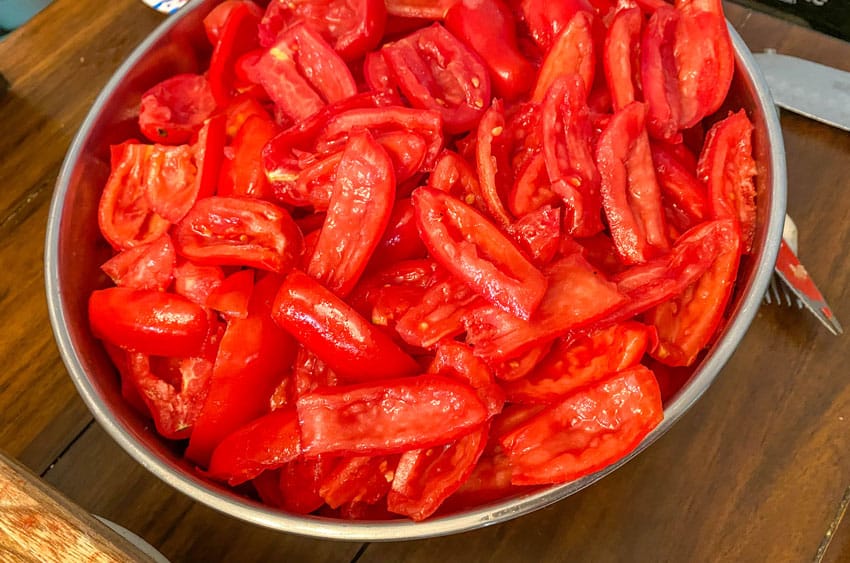
Working in batches, pass all the tomatoes through a food mill.
Discard the skins, and return the tomato pulp and juices to the stockpot.
Cook on medium high heat, stirring occasionally.
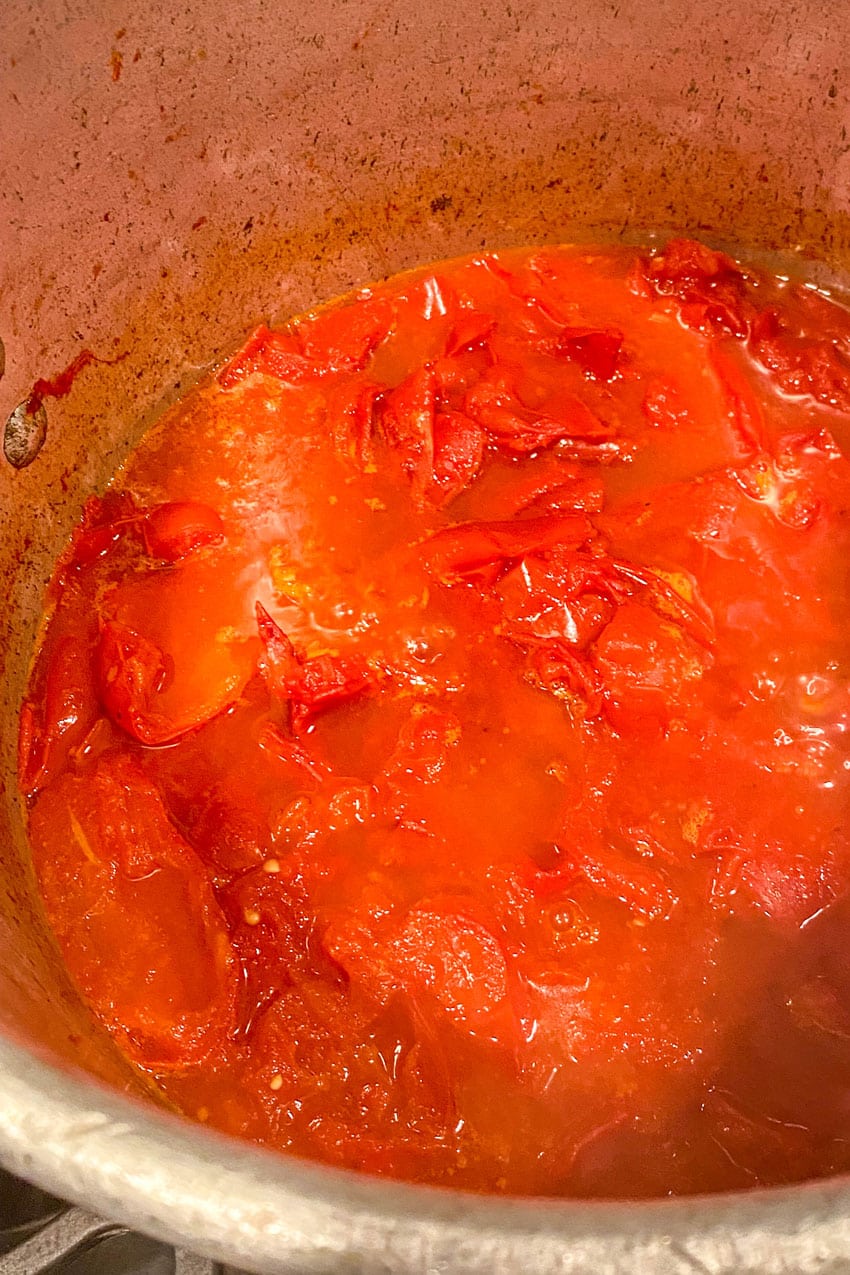
Once the volume begins to reduce, turn the heat down to medium.
Be sure to scrape down the edges, sides, and bottom of the stockpot every time you stir.
Continue to reduce the heat as the tomato mixture thickens.
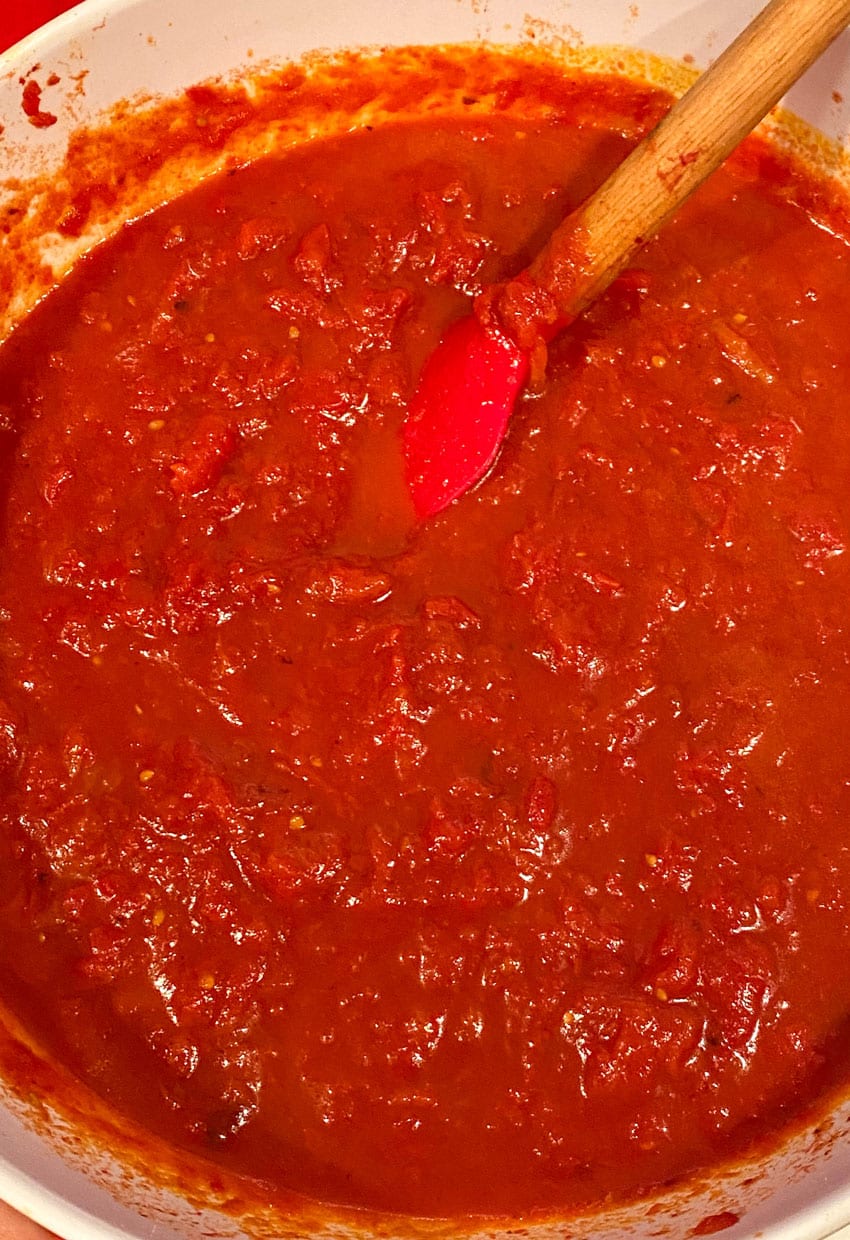
The more liquid that cooks out, the more you should reduce the heat.
Once the mixture has fully reduced and thickened into paste, remove the stockpot from heat and let the paste cool.
Then store or use the tomato paste.
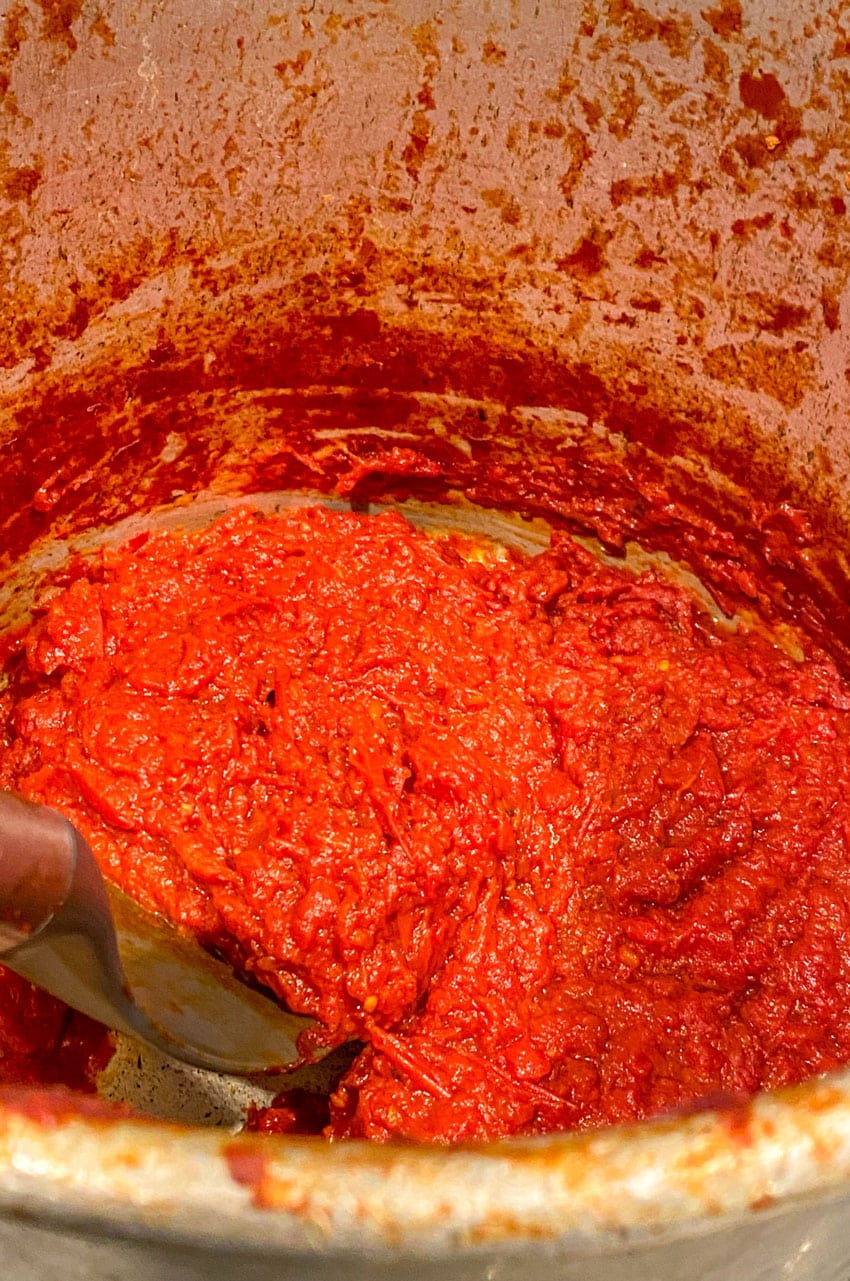
What Kind Of Pot Is Best For Cooking Tomatoes?
While it may seem like a slightly silly question, the answer really does matter and affect your results.
Certain metals are unsafe to use specifically when cooking tomatoes, and others can affect taste.
Cast iron and aluminum shouldn’t be used since tomatoes are highly acidic, and when cooking can leech the metals from the pots.
Other metals, like copper, can give the tomatoes a bitter metallic after-taste.
The best cookware to use when making tomato sauce (or paste) is non-reactive cookware, and the best option is stainless steel.
We make ours in a stainless steel stockpot.
Is there a difference between tomato paste and tomato puree?
Yes!
In a tomato puree, the tomatoes are lightly cooked before they are pureed into a sauce like liquid.
Tomato paste is cooked longer, much thicker, and has the skins and seeds removed.
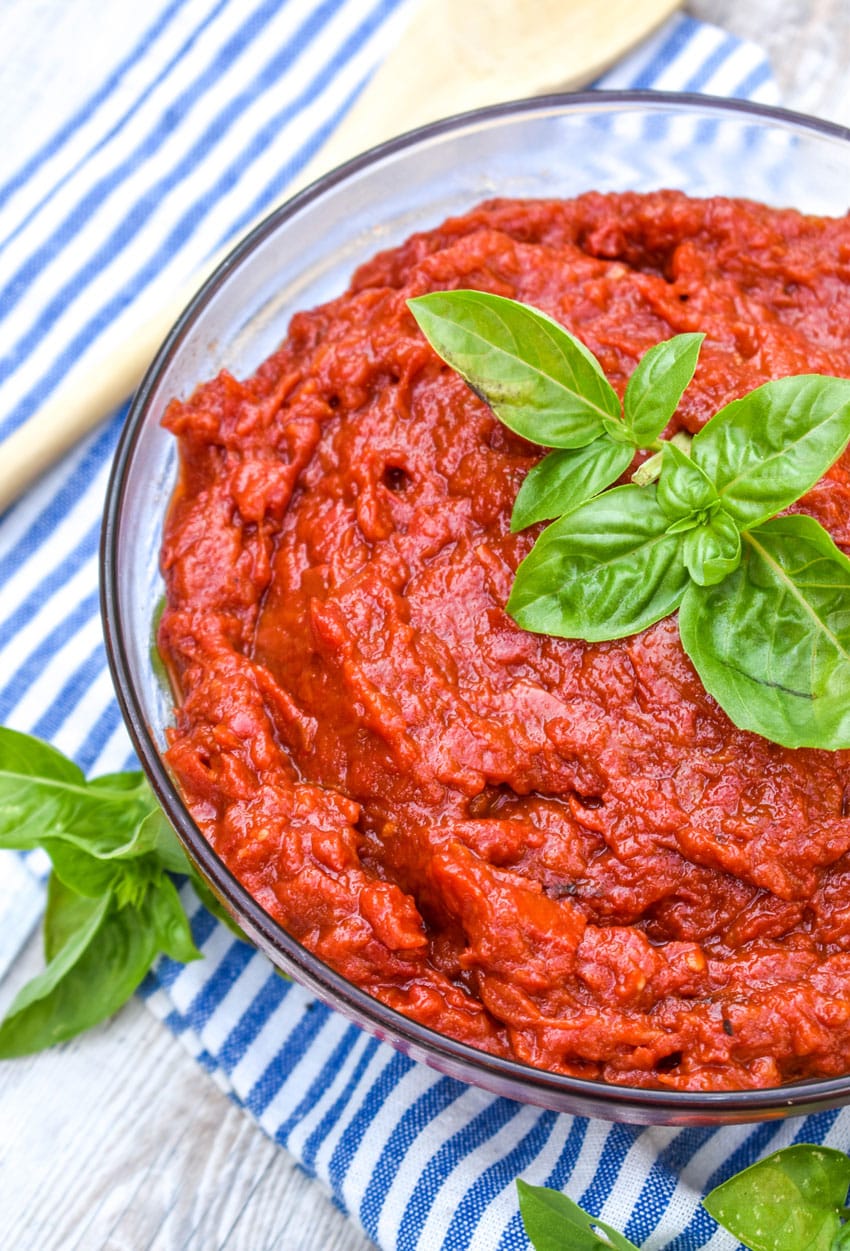
How much tomato paste does this make?
This recipe will yield 20-24 ounces of paste when finished.
I realize this may not sound like a lot for all of the work, but it really is.
Tomato paste is highly concentrated and flavorful, so a little (usually only a tablespoon or two), goes a very long way.
Storing
You can freeze homemade tomato paste in freezer bags or ice cube trays.
If you freeze them in ice cube trays, pop the frozen tomato paste cubes out of the trays and transferred to a freezer safe bag and stored in the freezer for up to 6 months.
Each paste cube is roughly 1 1/2 tablespoons.
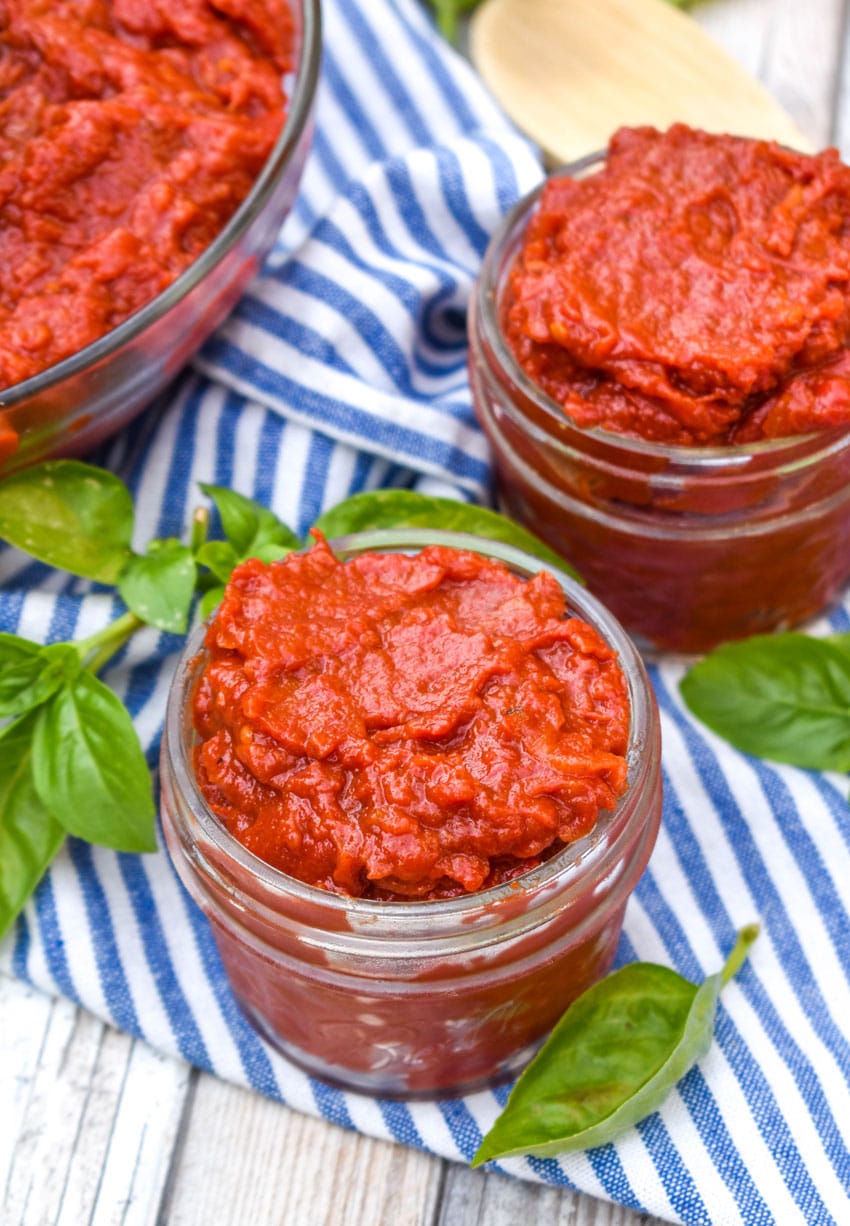
Can I can homemade tomato paste?
Yes! You can safely water bath can this recipe.
What kind of tomatoes can I use to make tomato paste?
I recommend roma (or paste) tomatoes for this recipe.
While you could probably use another variety, the results won’t be the same or the finished product as savory.
Romas have less water and more meat than other tomato varieties which leads to a higher yield of paste, making them ideal.
If you can find San Marzanos, those are the absolute best variety of paste tomatoes (just ask any Italian!).
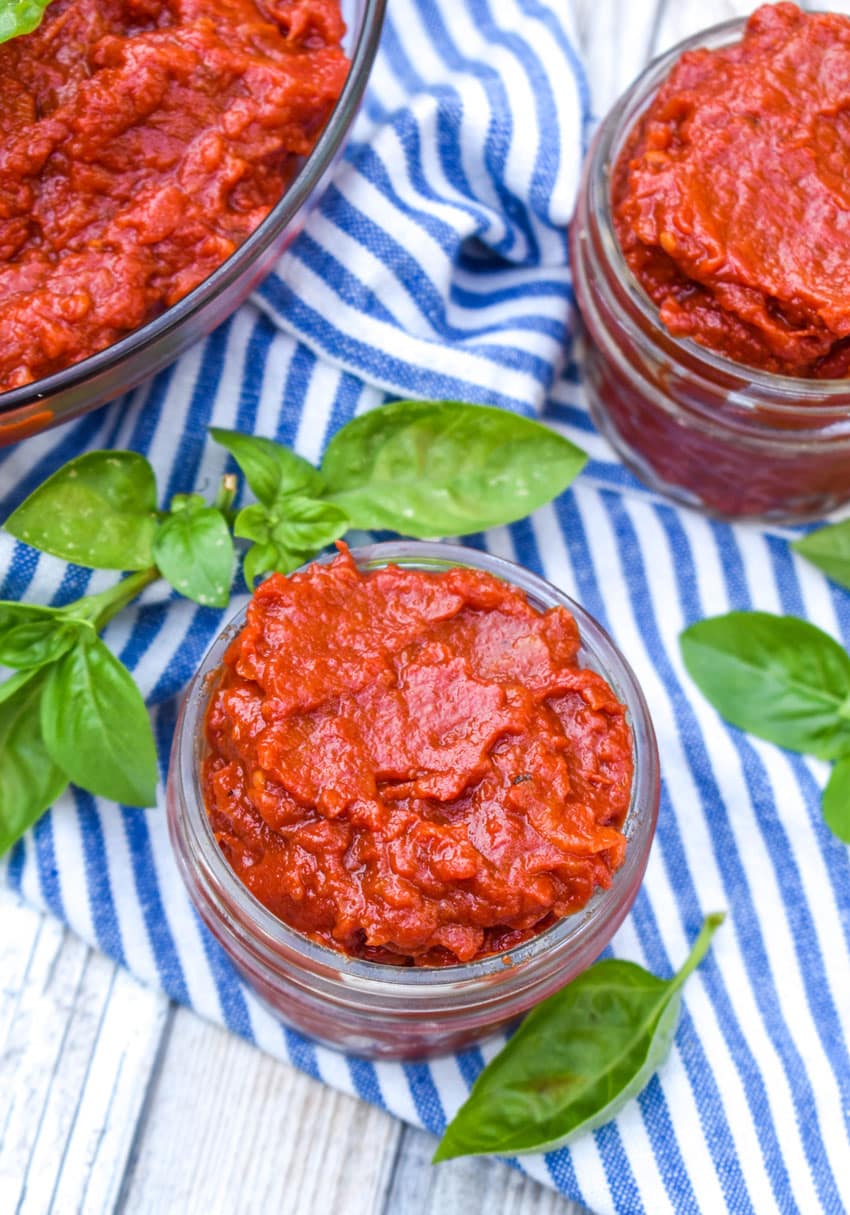
Tips and Tricks
- It usually takes my pulp 3-4 hours to completely reduce.
- Don’t have a food mill? Push the warm tomatoes through a mesh strainer.
- When you stir the paste, make sure you scrape the sides and bottom of your pot down well so nothing sticks or burns.
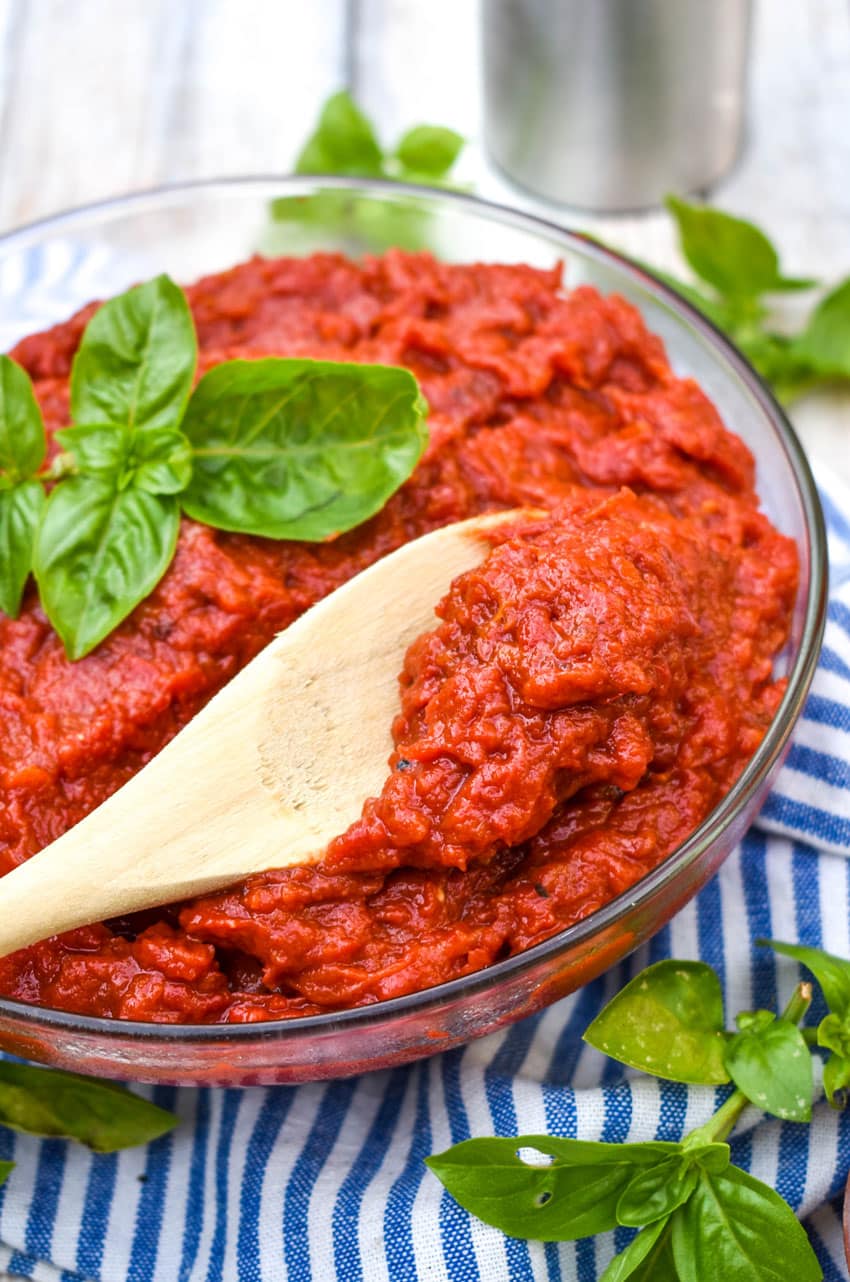
Recipes that Use Tomato Paste
Homemade tomato paste is a fantastic way to use up your garden fresh tomatoes.
Make it and enjoy!
Looking for recipes that use tomato paste?
Try these:
- Creamy Tomato Soup Mac & Cheese
- Slow Cooker Butter Chicken
- One Pot Pizza Pasta
- Easy Baked Gnocchi With Bacon
- Instant Pot Cincinnati Chili
If you’ve tried this HOMEMADE TOMATO PASTE, or any other recipe on the site, let me know in the comment section how it turned out, we love hearing from our readers! You can also follow along with me on PINTEREST, FACEBOOK, and INSTAGRAM to see more amazing recipes and whatever else we’ve got going on!
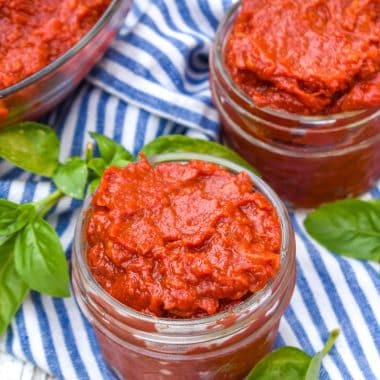
Easy Homemade Tomato Paste
Ingredients
- 8-10 lbs roma tomatoes also called paste tomatoes
- 2 tbsp extra virgin olive oil
- 2 bay leaves optional
Instructions
- Wash the tomatoes, making sure to remove any dirt or stuck on debris. Cut them into quarters, or halves- either is fine.
- Add both the tomatoes and oil to a large stockpot set over medium heat. Cook, stirring occasionally, until softened and the skins begin to peel away.
- Working in batches, pass all the tomatoes through a food mill. Discard the skins, and return the tomato pulp and juices to the stockpot.
- Cook on medium high heat, stirring occasionally. Once the volume begins to reduce, turn the heat down to medium. Be sure to scrape down the edges, sides, and bottom of the stockpot every time you stir.
- Continue to reduce the heat as the tomato mixture thickens. The more liquid cooks out, the more you should reduce the heat. Once the mixture has fully reduced and thickened into paste- remove the stockpot from heat. Let the paste cool.
- Once the mixture has fully reduced and thickened into paste- remove the stockpot from heat. Let the paste cool, then use or store.
Notes
- It usually takes my pulp 3-4 hours to completely reduce.
- Don't have a food mill? Push the warm tomatoes through a mesh strainer.
- When you stir the paste, make sure you scrape the sides and bottom of your pot down well so nothing sticks or burns.



